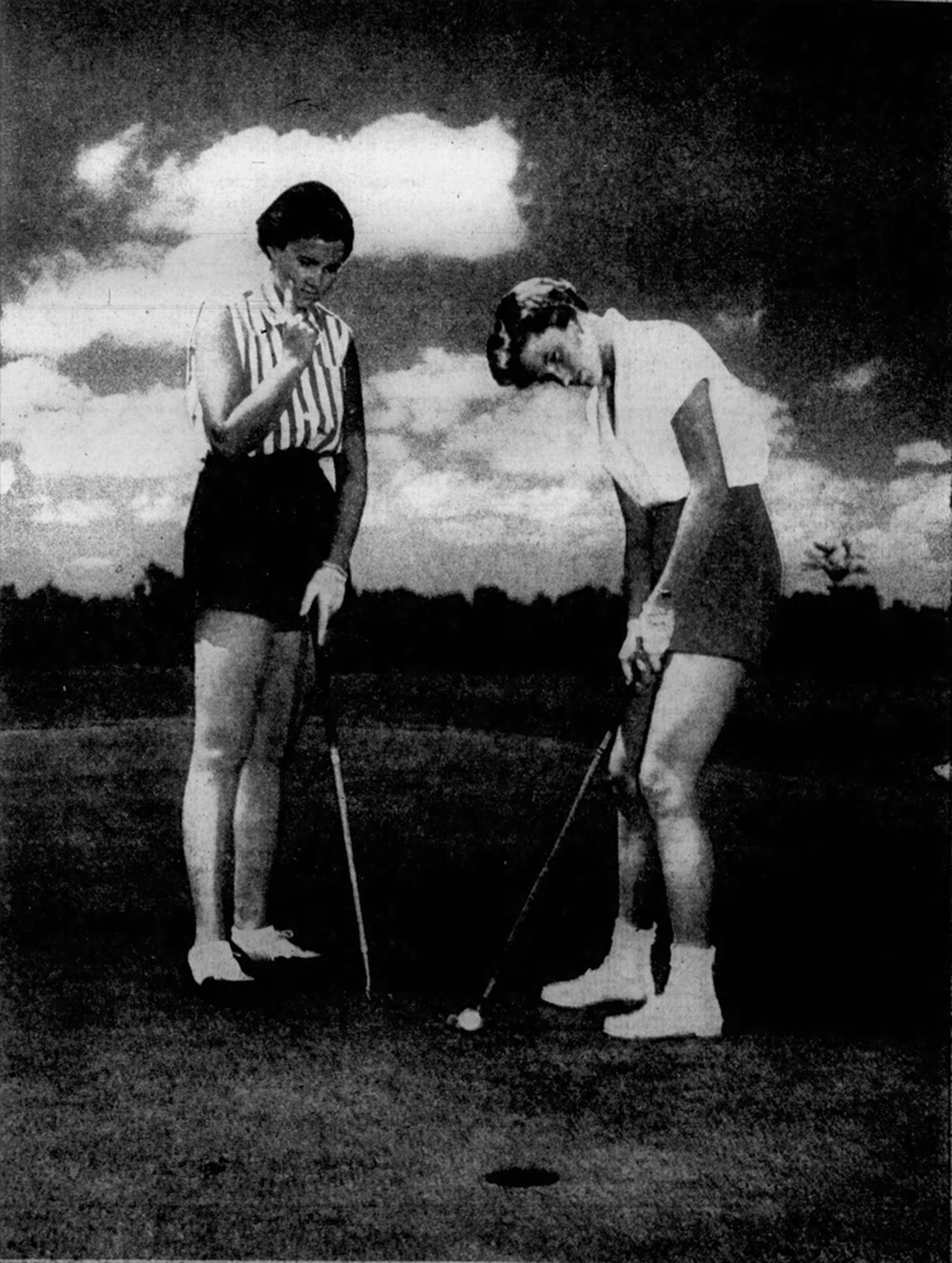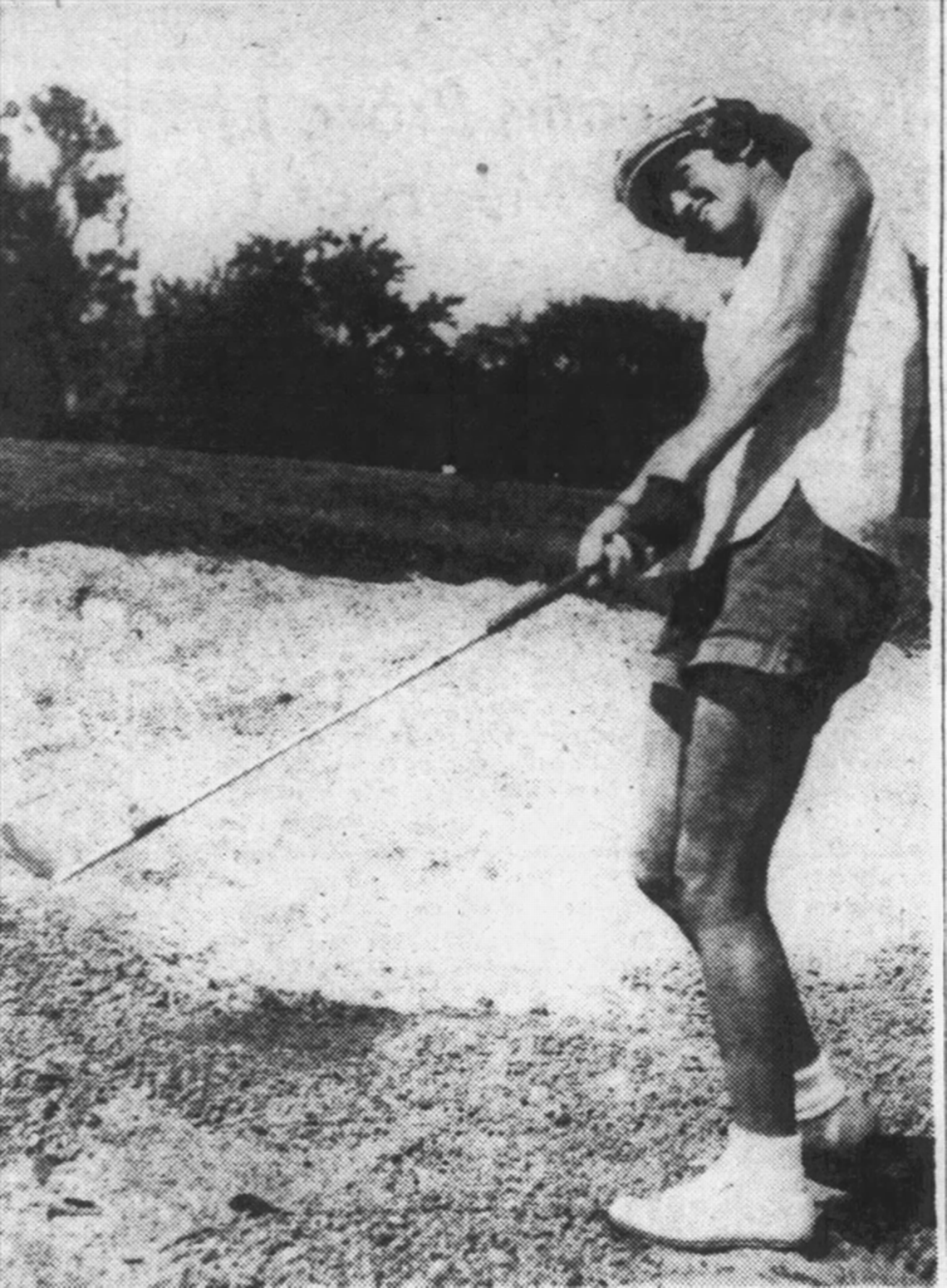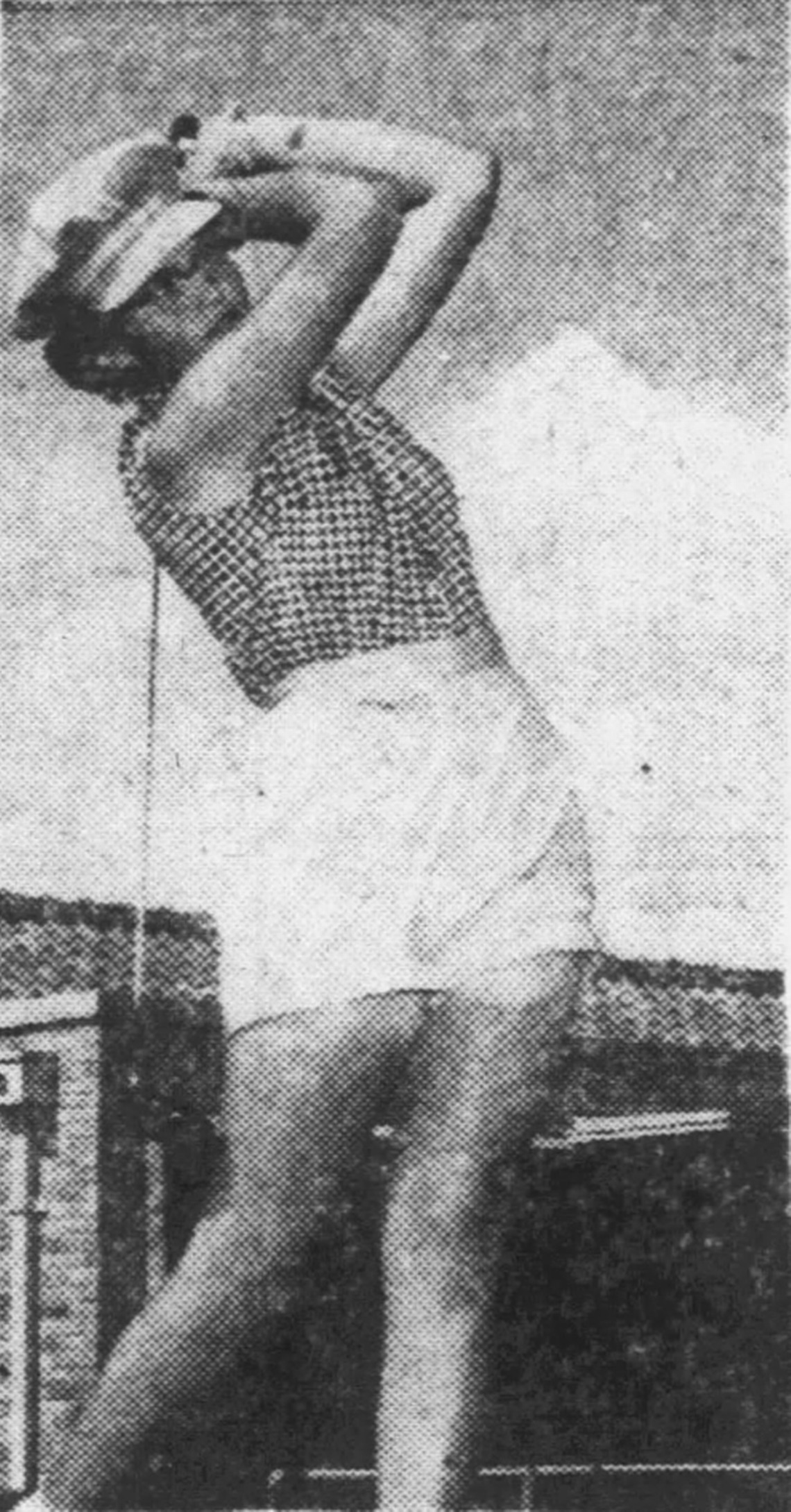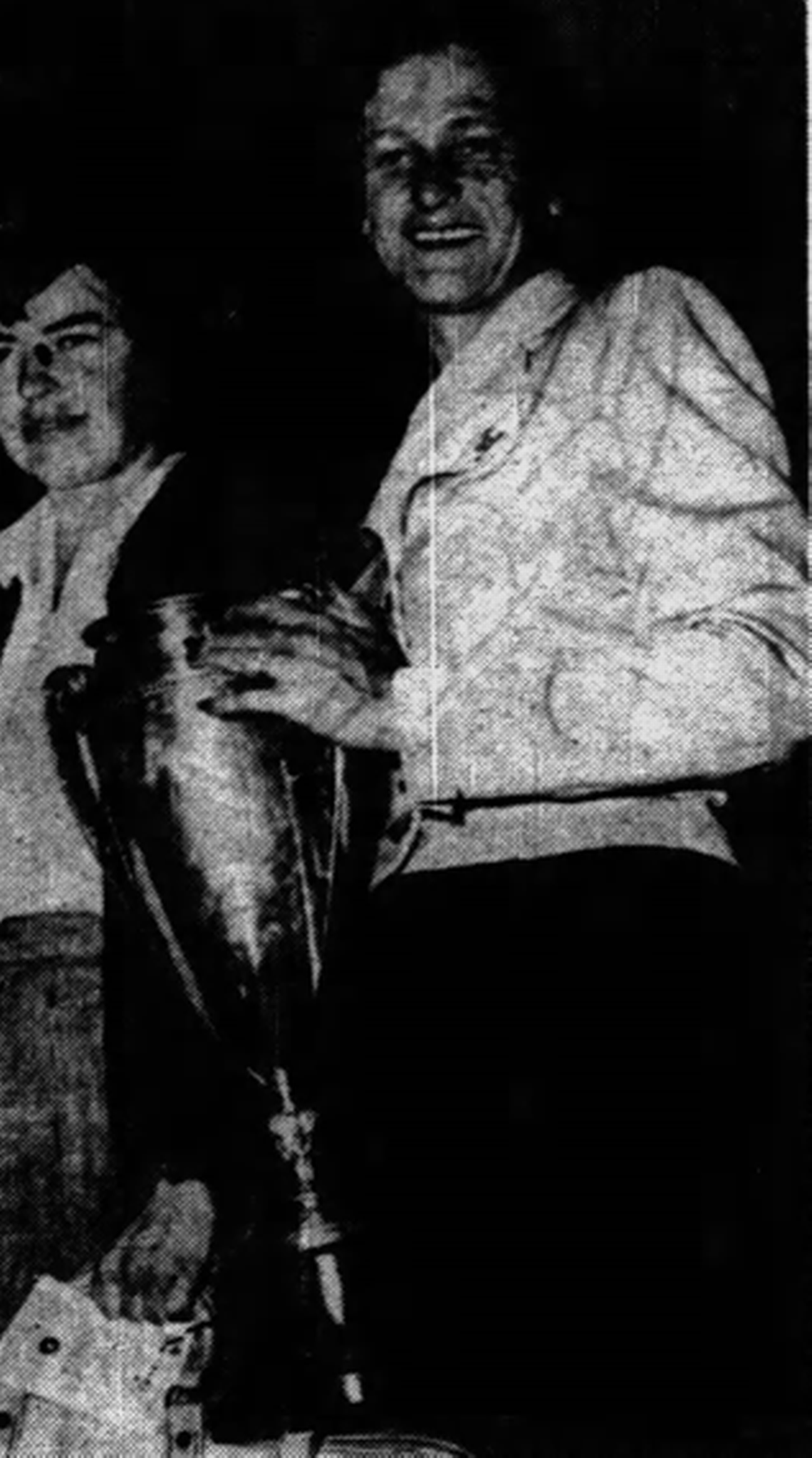‘Grow the game’: Wichita celebrates women’s golf history as birthplace of LPGA
Natasha Fife is a long-time resident on the east side of Wichita, but she persists in making the cross-town drive to Rolling Hills Country Club, where she has been a member since 1954.
She never minded the few extra minutes in the car to return to a golf course that few in Wichita realize has such historical relevance.
Rolling Hills will never lose its meaning to Fife, who is still an active member at the age of 85, because she can still recall the iron chairs and the linoleum tables in the clubhouse where 13 of the best women’s golfers officially founded the Ladies Professional Golf Association during the 1950 U.S. Women’s Open in Wichita.
Fife, formerly Matson, was too young to be included among the founding members at the time, but what happened that fateful day at Rolling Hills legitimized women’s golf and paved the way for the Wichita native to become one of the most influential women’s golfers in Kansas history in her own right.
Nearly 72 years later, women’s professional golf made a return to the birthplace of the LPGA last week with the Heritage Classic, a tournament Rolling Hills hopes becomes an annual summer stop for the Women’s All Pro Tour.
“It’s a blessing because Wichita deserves to have women golfers of this caliber playing here and coming to see what we have to offer,” said Fife, who was a volunteer at the tournament. “This is really special.”

‘We were just trying to grow the game’
While the golf course and clubhouse have undergone modern renovations, the Rolling Hills of Fife’s youth remains preserved in time in her head.
“A lot of good memories here,” Fife said while sitting in the Rolling Hills clubhouse. “A lot is different, but that’s okay. That’s growth. I can still go back and replay the 18 holes that I used to play all the time in my mind. This is just a good place to be.”
Fife was introduced to the game of golf at an early age by her father, George Matson, who played at Wichita State and later became a golf pro at various clubs.
But it was actually tragedy — her mother, Maxine, died at age 43 in 1955 — that Fife says pushed her to a new level.
“My mother had died suddenly and I was 19 at the time and in college and I was kind of lost,” Fife said. “(Rolling Hills head pro) Gene O’Brien and my dad got me out to play here at Rolling Hills and it was something where I could go there and I could hide. And I found out the more I hid on the practice tee, the more I liked it.”
Known simply as “Tash” in golfing circles, Fife went on to win five of the next seven Kansas Women’s Amateur championships. In 1960, she was named one of the 10 best women’s amateur golfers in America by the USGA.
Her game was flawless and she had an even-keeled temperament to match it, which helped her win seven Wichita Women’s Amateurs and three Broadmoor Amateur titles before putting her career on pause in 1963 to raise her family and then returning after a decade-long absence to win seven Kansas Women’s Senior Amateur championships.
Fife was also instrumental in advancing women’s sports at Wichita State, where she helped create women’s athletic programs in 1969 and then was named the first women athletics director in 1974 to lead women’s athletics into the varsity era.
But her first passion was golf and Fife was part of a historic generation of women’s golfers in Wichita that also included Marilynn Smith, a founding member of the LPGA and one of the sport’s early stars, and Judy Bell, an accomplished golfer in her own right who later became the first woman President of the USGA.
All three were some of the most prominent women golfers in the country and all three called Wichita home.
“At the time, we didn’t really think about it. We were just trying to grow the game,” Fife said. “I never realized it until afterwards just what a big deal it was.”

‘Honey, we just went day to day’
Before Fife’s reign as the state’s top golfer came another Wichita native in Marilynn Smith, who won three consecutive Kansas Women’s Amateurs from 1946-48 before enrolling in the University of Kansas.
It was in college when the trailblazer met the first of many bumps in a journey that would include 22 victories as a professional, including two major championships.
“My dad went to Phog Allen, who was the director of athletics at the time, to see if we could get some expense money for me to play in the inter-collegiate tournament for women,” Smith told The Kansas City Star in a 2002 interview. “And he said, ‘Mr. Smith, it’s too bad your daughters’ not a boy.’”
Smith, who died in 2019, was at Rolling Hills in 1950 when the charter document was signed and the LPGA was formed.
It proved to be a labor of love for the women, who traveled from town to town and handled just about every detail of setting up the tournament on their own. They would set up the course, make the pairings, schedule radio promotions, compete in the tournament, pay out the purse and then load up their clubs and drive to the next stop and do it all over again.
This during an era when many men considered women’s sports an oddity and few gave professional women’s golf a chance to make it.
The first year of the LPGA featured 14 tournaments with a total of $50,000 in prize money. The 2022 season of the LPGA will feature 34 tournaments with nearly $86 million in official purse money.
“Honey, we just went day to day,” Smith told the Star in 2002. “We did whatever we could to make it work. Everybody had their own charisma and capabilities. People say now, ‘You must have had a vision.’ I don’t know that we thought of it that way. But looking back now, I guess it was courageous.”
Fife saw first-hand how much time Smith, Babe Zaharias and other star women’s golfers of the time invested in growing the game for the players coming up behind them, which included hosting golf clinics and putting on driving exhibitions in every new town.
“I don’t think those women were fighting so much for their rights as they were just fighting for fairness,” Fife said. “They put in all of the work. I don’t think that they felt like they deserved anything. It wasn’t, ‘Give it to me.’ They went out and they worked for it.”
Rick Nuckolls started working as the head pro at Rolling Hills in 1980 and it didn’t take him long for him to notice the impact Smith, Fife and Bell had on the local women’s golf community.
“The common link between all of those ladies is they were all wonderful people who were extremely kind and always thinking, ‘What can we do to help?’” Nuckolls said. “We’re talking about the very best there were at the time and they all just wanted to help people get better at golf. It was pretty amazing to see.”

‘Makes you proud to be a Wichitan’
Nuckolls was far from the first person to enter the Rolling Hills clubhouse and not be aware of the history that took place there.
He says more people in Wichita need to know about the historical significance.
“It’s one of those things where it really makes you proud to be a Wichitan and a member of Rolling Hills,” Nuckolls said. “I knew a lot of those ladies personally and every one of them were fantastic players, but even better people. It’s a pretty cool thing to know that the LPGA was born right here in Wichita.”
When David Guy accepted the head pro job at Rolling Hills in 2021, he learned of the club’s history and immediately made it a priority to return women’s professional golf to Rolling Hills.
During the Heritage Classic last week, Guy helped transform the south entrance of the clubhouse into a museum of sorts to commemorate the 13 founders of the LPGA Tour. He had plaques with a picture and bio of each founding member hanging on the walls, complete with a mannequin dressed in the attire of a women’s golfer in 1950 and the letter written by the LPGA to Rolling Hills to celebrate its 50th anniversary.

“We wanted to give it that feel of history,” Guy said. “It makes you proud to be associated with a club like this. To work here is a humbling experience because it has such a unique place in history. There’s only one place that can ever claim to be the birthplace. It’s very special.”
More than 80 women’s golfers played in the tournament, all vying for an exemption to the LPGA’s Epson Tour, which is the final stepping stone before gaining LPGA Tour status. Mariel Galdiano won the $10,000 first prize by carding a 72-hole total of 15-under 273, beating the field by seven strokes.
The majority of golfers playing in WAPT events are young professionals fresh out of college grinding to fulfill their dreams of making it on the LPGA Tour. Few, if any, knew the history at Rolling Hills before playing the course last week, but Maddie Luitwieler, a former Texas standout, was one who enjoyed the history lesson.
“We travel all around the world, but it was really cool to come here and learn about the history and see all of the pictures,” said Luitwieler, who wore a gold ribbon in Wichita to honor the LPGA founding members. “We got to see the dresses they used to wear and even the golf balls they used back then and the clubs.
“It’s crazy how far the game has come and we’re still getting there. But we’ve made some huge leaps and the prize money has gone up and we feel really special that they’re allowing us to come out here.”
But the biggest surprise of the week?
Learning that Fife, who had her own plaque on the history wall, was their ball spotter on hole No. 16.
After all these years, she was still looking for any small way to help advance the game.
“Golf is still part of my life and it will always be a part of my life,” Fife said. “You can’t go wrong on the golf course.”
